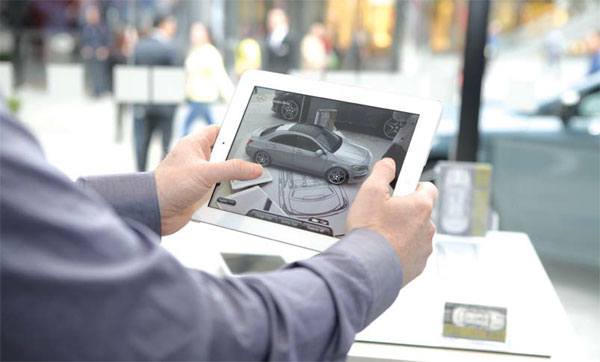Automakers up their game in China
Updated: 2014-04-20 08:05
By Namrita Chow(China Daily)
|
|||||||||
|
A customer examines the safety system of a new car. Interactive presentations lure visitors during the auto show. Provided to China Daily |
|
Models will share the spotlight at the upcoming event. Geng Guoqing / For China Daily |
Beijing event used to show products and technologies
The battle for a share of China's market is taking on a new dimension as automakers look to build brand loyalty by expanding product lineups.
As a country where word of mouth and family recommendations hold strong car companies are keen to attract family brand loyalty by offering a range of products to suit different needs.
International automakers are keen to show they have premium brands in their lineups.
Competition in the mainstream market has led a number of auto companies using the Beijing Auto Show to highlight their credibility and show potential Chinese customers that they too can create premium, luxury vehicles.
By showing their aptitude to design and produce high-end vehicles, the automakers aim to gain momentum in the mainstream market as consumers gain confidence and awareness of their capabilities.
Therefore in addition to mainstream brand models on display, a number of international companies will show both concepts and production versions of models under their premium lines. Many will also announce local production of the premium models and brands in China.
Increase in SUVs

Premium automakers will also showcase their wares in force at the Beijing show, with a noticeable increase in SUVs.
The SUV segment continues to grow in China and both premium and mainstream companies hope to cash in on the trend by offering new models.
Volkswagen's new SUV model, T-ROC, will make its Asia debut at the show. Volkswagen is considering whether to produce a version of the T-ROC concept in China.
Local auto companies are also keen to display their ability to gain stakes in the segment. Great Wall will release its new Haval 8 SUV while Lifan and others will also showcase new models.
IHS found that the SUV segment has seen a strong increase in players and that local production is rising.
IHS Automotive historical data showed a total of 1.38 million SUVs were locally produced in 2010. By 2015, that number is expected to rise to more than 4.44 million units, with a further rise to more than 6 million units expected in 2020.
The fight to get a share of the domestic market has seen a number of automakers introduce new SUV models specifically for Chinese consumers.
As the government encourages automakers to produce new-energy vehicles, the industry looks to highlight their electric and plug-in hybrid models.
Often the models are concepts aimed to gauge local reaction. However, recent moves, including Audi's decision to introduce e-tron technology to the new Audi 6 L etron model for China, shows that international companies are taking the trend seriously.
Mazda also announced it will push its cleaner-technology products in its new Atenza and Axela models - or Mazda 6 and Mazda 3 in China.
New technologies
The trend to use more telematics and in-car technologies such as advanced driver assistance systems - known as ADAS- has also seen strong growth.
As a result automakers will showcase a line of new apps for their cars at the Beijing show to attract tech-savvy customers.
Certain ADAS systems, including parking-assistance and satellite-navigation, are more popular than others.
ADAS consist of a broad range of safety and convenience systems including blind-spot detection (BSD), parking assist, adaptive cruise control, stability control, and night vision.
The fitment rate of BSD is about 1 percent in China, but IHS forecast that this will increase to 9 percent in 2019. This means 2.2 million passenger light vehicles sold during that year could be equipped with BSD.
The fitment rate of self-parking systems is forecast to increase to 8 percent in 2019, up from just 1 percent in 2012.
For car companies, having the ability to offer Chinese buyers a variety of in-car tech infotainment options increases their appeal, especially for younger customers.
As fitment rates for both ADAS and infotainment systems increase, the economies of scale mean that the price of these products will come down. Overall, as cars become more in tune with self-driving, there will be a marked increase in offerings of in-car technologies.
Infotainment and telematics options are therefore on the rise in cars on offer in China and automakers will use the Beijing show to highlight what options they can offer.
The trend for safety has also gained increasing importance in China as families seek the safest method to transport for their loved ones within their price range. This has driven and will continue to drive the trend for driver assistance products such as those featured in many ADAS packages.
The author is principal analyst with Shanghai-based IHS Automotive.
(China Daily 04/20/2014 page42)

